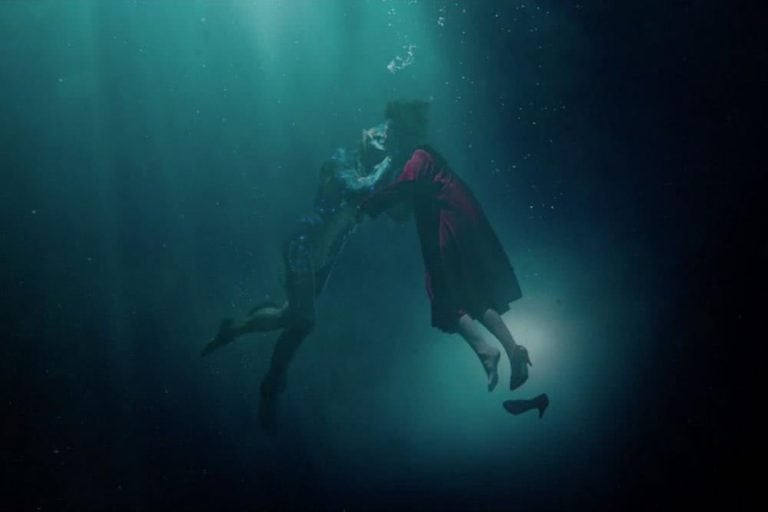There’s a lot of things The Shape Of Water does brilliantly, but one of the things that feels particularly new about the story of the mute janitor, Elisa, who falls in love with a strange ‘fish-man’ held captive at a laboratory, is the sophistication in its depiction of sex.
Monster movies do not have a great track record on the issue, largely using sex as a source of fear or voyeurism: Alien is one of the more obvious examples. Filled with violently phallic imagery, the screenwriter Dan O’ Bannon is on record as saying to create fear in his audiences, “I’m going to attack them sexually.”
There’s also the fact director Guillermo del Toro took his influence for the film from a childhood viewing of The Creature From The Black Lagoon, when he thought it was a love story. Now, he’s said that the film is a “counter-point” to a scene from the film, when protagonist Kay, dressed in a tight swim-suit as she glides across the lagoon, is ogled by the monster, who threatens to touch her but pulls away at the last moment. Kay becomes the centre of conflict in the film after the creature abducts her, which leads to the climactic stand-off where the creature is killed. As with other movie monsters, the fear is sexual.
Monster movies do not have a great track record … largely using sex as a source of fear or voyeurism.
Sex in The Shape Of Water, though, is much more multi-faceted: It fulfils the mundane outlet of libido in the opening, when Del Toro frankly displays Elisa masturbating in the bathtub, and is used as a means of power by the villain, Colonel Richard Strickland, whose extremely loveless marital bed belies the same pathetic need to control that sees him fastidiously studying The Power Of Positive Thinking.
Elisa and the Amphibian Man first fuck underwater, after flooding the bathroom where he comes to live. In its climax, as Elisa and the Amphibian Man embrace one another, it cuts to the next scene. For a moment it seems that del Toro is shying away from the tricky logistics of how Elisa and the Amphibian Man screw, but signs of a cop-out fall away when Elisa explains to her co-worker Zelda, using hand gestures, how it works, while both of them giggle. It’s not a romanticised vision of sex, it’s one that recognises the reality that sex can both feel life-changing and be hilarious.
Love Film & TV?
Get your daily dose of everything happening in music, film and TV in Australia and abroad.
Sex becomes a means of both restoration and access to another world.
Also notable is the film’s diversity. There is a queer character in Giles, Elisa’s best friend and neighbour who at first resists her pleadings for help in rescuing the monster. Later, Giles misinterprets friendliness from a cute male pie shop manager as flirtation and comes close to being physically assaulted by a bigot. It’s this that provokes him to take the leap Elisa has taken, and plot to heist the Amphibian Man from his incarceration at the laboratory.
Elisa, who is mute, is disabled, an identity category whose sexuality films have a history of either ignoring or mocking, particularly in women. Elisa seems to woelessly deal with her muteness until one of the film’s most poignant scenes, in which she makes Giles deliver her signing vocally as she explains her love for the Amphibian Man: “He does not see what I lack.” It’s a loaded phrase to me, with my experience of disability: It’s not right to say that disabled people are not ‘whole,’ or are ‘broken,’ as much stigma insists. However, it’s also not wrong to say that to have the everyday pain at the burden of being recognised as failing to reach a standard of ability relieved can be inexpressibly liberating. This idea of the freedom this brings culminates in the ending, when the Amphibian Man’s touch saves Elisa from death and she is reborn, newly gilled, to a life with him in the ocean. Sex becomes a means of both restoration and access to another world, a transcendence both literal and metaphorical.
The Shape Of Water is in cinemas now.


































